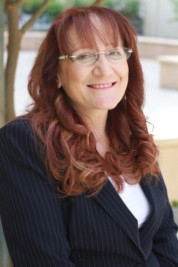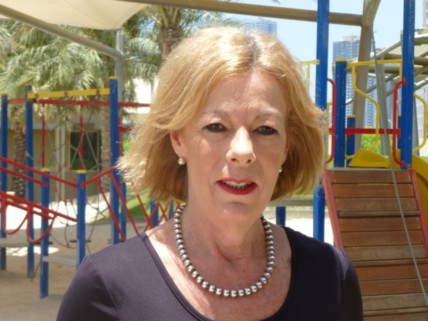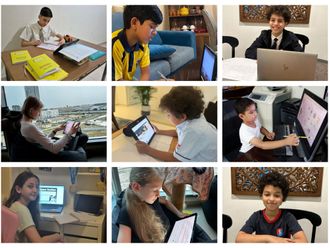
No matter what curriculum a school has, good teaching practices are always based on a set of principles, such as ‘all children can learn’. Some of these principles must seem obvious, but when we consider they mean, they have serious implications. For example, if we truly believe that ‘all children can learn,’, then we need to resource schools and classrooms so that indeed, all children can learn, no matter their ability.
No. 1 Why a learning environment that is supportive and productive works:
Such an environment enables teachers to build quality relationships, promote a culture of value and respect, encourage students to take risks with their learning and support students to achieve success. Students learn best when they feel safe and valued and know that their different opinions will be acknowledged and respected and cultural and other differences will be accepted. They need to feel confident to contribute ideas and to ‘have a go’ knowing that their efforts will be acknowledged, supported and celebrated. Students also need to understand agreed rules of behavior so as to contribute positively to their learning community. Creating this learning environment, enables our students to feel comfortable to pursue inquiries and investigations, try out new ideas and express themselves without fear of being ‘put down’.
The use of the Reading ‘Block’
Learning to read is an exciting and enjoyable experience for students at VISS. During the Reading Block, they have the opportunity to work with the whole class, as part of a small group and independently to develop their reading skills.
Typically, the Reading Block begins with the whole class reading together with the teacher – all from the same big book. During this whole class time, students learn about how texts work. They are introduced to sentence structure, punctuation and new vocabulary and are encouraged to think critically by exploring and discussing characters, events and the main ideas of the book. Students also have the opportunity to observe the teacher modeling reading behaviours and strategies.
Students within any one class have a range of skills and abilities. It is during the small group and independent focus of the Reading Block that they work at ‘learning centres’ incorporating specific differentiated activities to target their individual learning needs.
A Learning Centre designed to develop word and sentence knowledge, would include activities such as:
• matching words and pictures from the text
• highlighting simple high frequency words within the text
• reconstructing a sentence from the text
• sequencing sentences to retell the text.
These activities allow students to build on prior knowledge and skills in order to advance to the next level and become confident young readers.
Guided Reading where the teacher works with a small group of students and guides them as they read, talk and think their way through a text is also an important component of this part of the Reading Block.
The Reading Block concludes, as it began, with a whole class focus during which students are encouraged to reflect on and share their learning with the class.
No 2: How independence, interdependence and self-motivation can be nurtured in a classroom
The second Principle of Learning and Teaching promotes independence, interdependence and self-motivation in students. Therefore, it is vital for our teachers at VISS to establish an atmosphere of cooperation and collaboration and model practices that build independence, interdependence and motivate students to be involved in decision making within the classroom. Through explicit teaching of team-building skills, VISS students learn to collaborate, negotiate and contribute to projects. Learning experiences in all classrooms are structured so as to establish what students already know and build on prior knowledge in manageable steps. Students are supported as they make choices, take responsibility for their learning and develop an understanding of themselves as learners. This is facilitated by clear criteria based and often collaborative assessment processes.
No 3 How students’ needs, backgrounds, perspectives and interests are reflected in the learning program
This, the third principle, is perhaps the most challenging as it requires teachers to be responsive to the backgrounds, experiences, interests, knowledge, abilities and strengths of individual students. The teachers at VISS are trained to provide for a range of learning styles, setting varied tasks during each unit, using a range of resources and ensuring each task is open ended allowing students to work at different levels. Some use popular media, and all incorporate contemporary technologies into their programs.
If our students are to move beyond superficial understandings and develop deep levels of thinking and application, they need to be challenged to explore, question and engage with significant ideas and practices.
No. 4 Making students apply knowledge to practical results
The fourth principle involves building key ideas into a learning sequence and providing sufficient time in teaching and learning sessions for students to look at and explore these ideas in depth. Underpinning this is an expectation that students will achieve at a high level and put in effort to produce quality work. Students learn best when links are made across curriculum areas to demonstrate relevance and connectedness with what is being taught and when their learning can be transferred to new applications. Therefore, they need opportunities to talk together, discuss, argue and express opinions and alternative points of view. At VISS, we encourage our students to ask questions, make suggestions and challenge contributions. Teacher questions are open-ended and designed to promote depth and breadth of knowledge and understanding.
No 5 The importance of assessment practices
Assessment practices are integral to providing a teaching and learning program that is responsive to student learning needs, builds on prior knowledge and skills and supports further learning. Assessment becomes continuous and explicit, encompasses a variety of methods and requires students to demonstrate knowledge and skills at many levels. We do more than just exams! Evidence from assessment is used by the staff to inform planning and teaching and provide constructive feedback to students. Appropriate feedback has been found to be critically important in improving student outcomes. At VISS, when providing feedback on tasks, or writing reports, teachers must acknowledge students’ strengths, suggest areas for improvement and ways to move forward in their learning. This is more helpful than a letter grade. Parent teacher interviews become a three way process as they also involve students. This encourages the students to review, reflect on and refine their understandings.
Assessment doesn’t always mean an exam
In a PoLT classroom, assessment is designed to show that a child both knows and can do what is required. Some of the assessment and reporting practices include:
1) Peer and self assessment – students comment on their own and others work using a set of guidelines.
2) One-on-one conferences with the teacher so that the teacher can provide direct feedback.
3) Continuous feedback from the teacher through comments on how a piece of work can be improved (as opposed to just providing a mark).
4) Rubrics – these are template which show students what an A or B looks like.
5) Formal reports including detailed comments.
6) Three-way conferences between school, child and parent to discuss work.
7) Individual learning tasks – set by the teacher for each child.
8) Standardised tests – these are set tests from external sources which enable a student to be measured against state or national standards.
9) Pen and paper tests such as traditional exams.
10) Running records – a method of recording of a child’s reading to show fluency and accuracy.
11) Check lists
No 6 Learning and Teaching as an all-round strategy
The final Principle of Learning and Teaching is aimed at connecting learning that takes place in the classroom to local and broader communities. At VISS, this means that learning must be linked to real life situations. Students participate in excursions to a variety of venues and have the opportunity to attend camps. They are engaged in local or global community projects often organized by the students themselves. Employing the Principles of Learning and Teaching not only ensures best practice but also maximises teaching and learning opportunities for all students, which should be the goal for any school.














